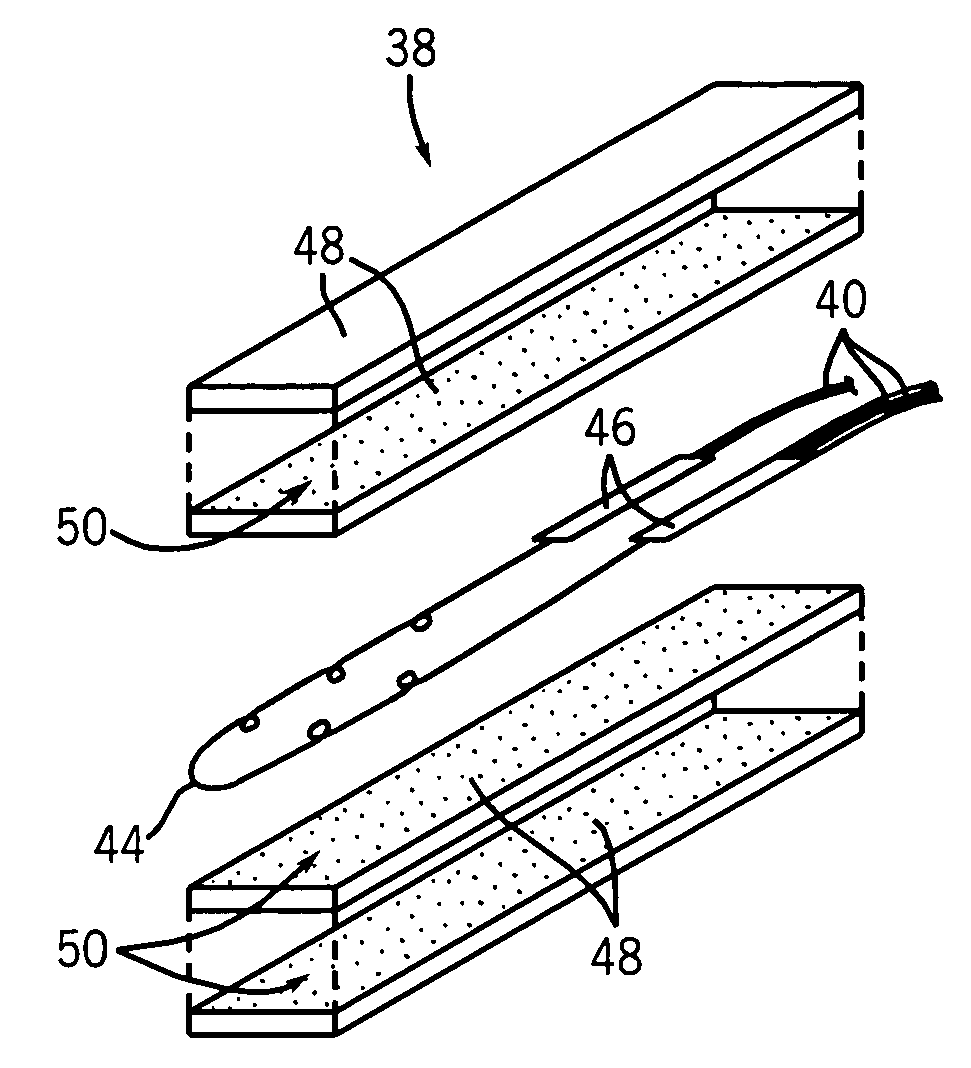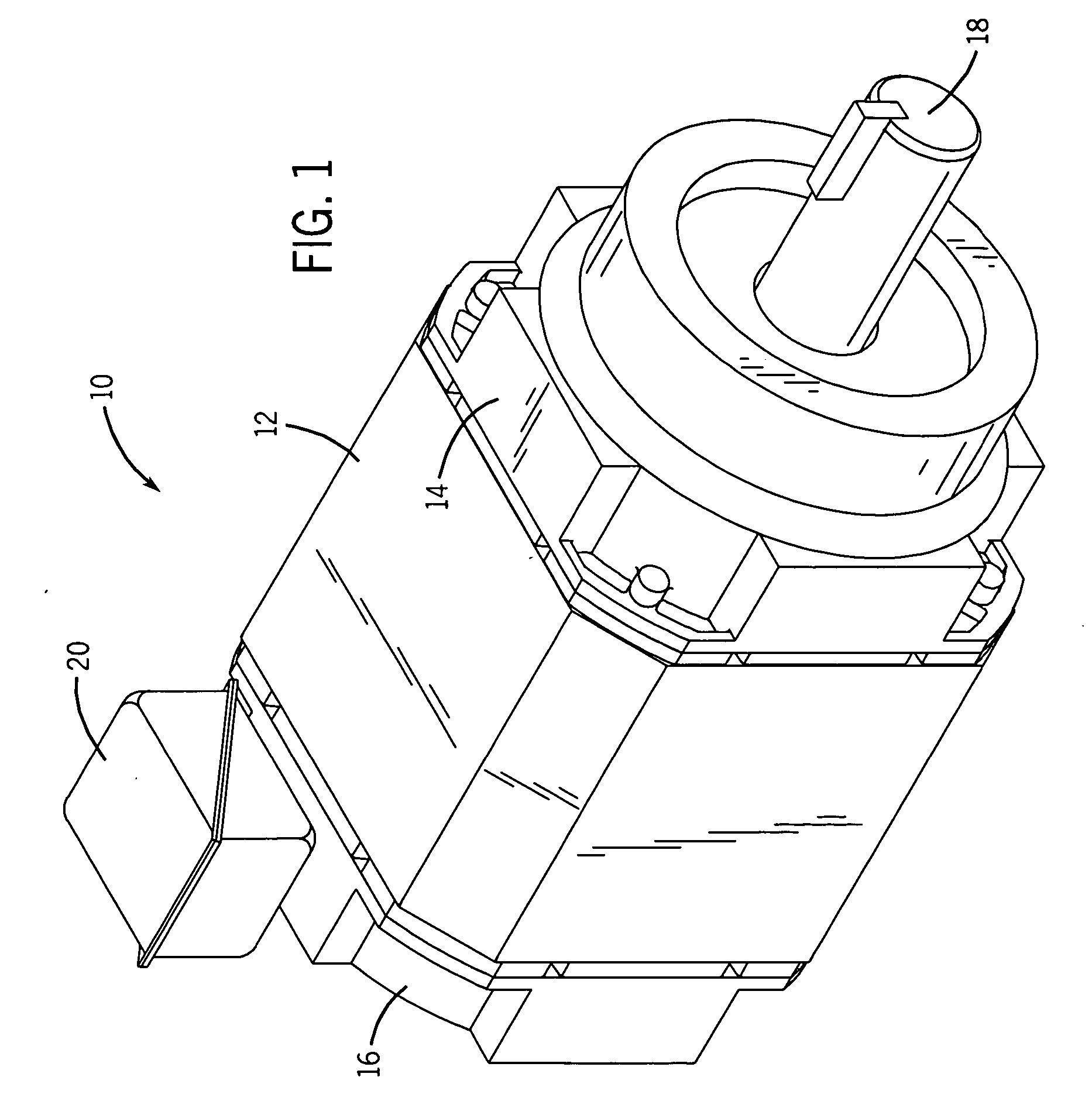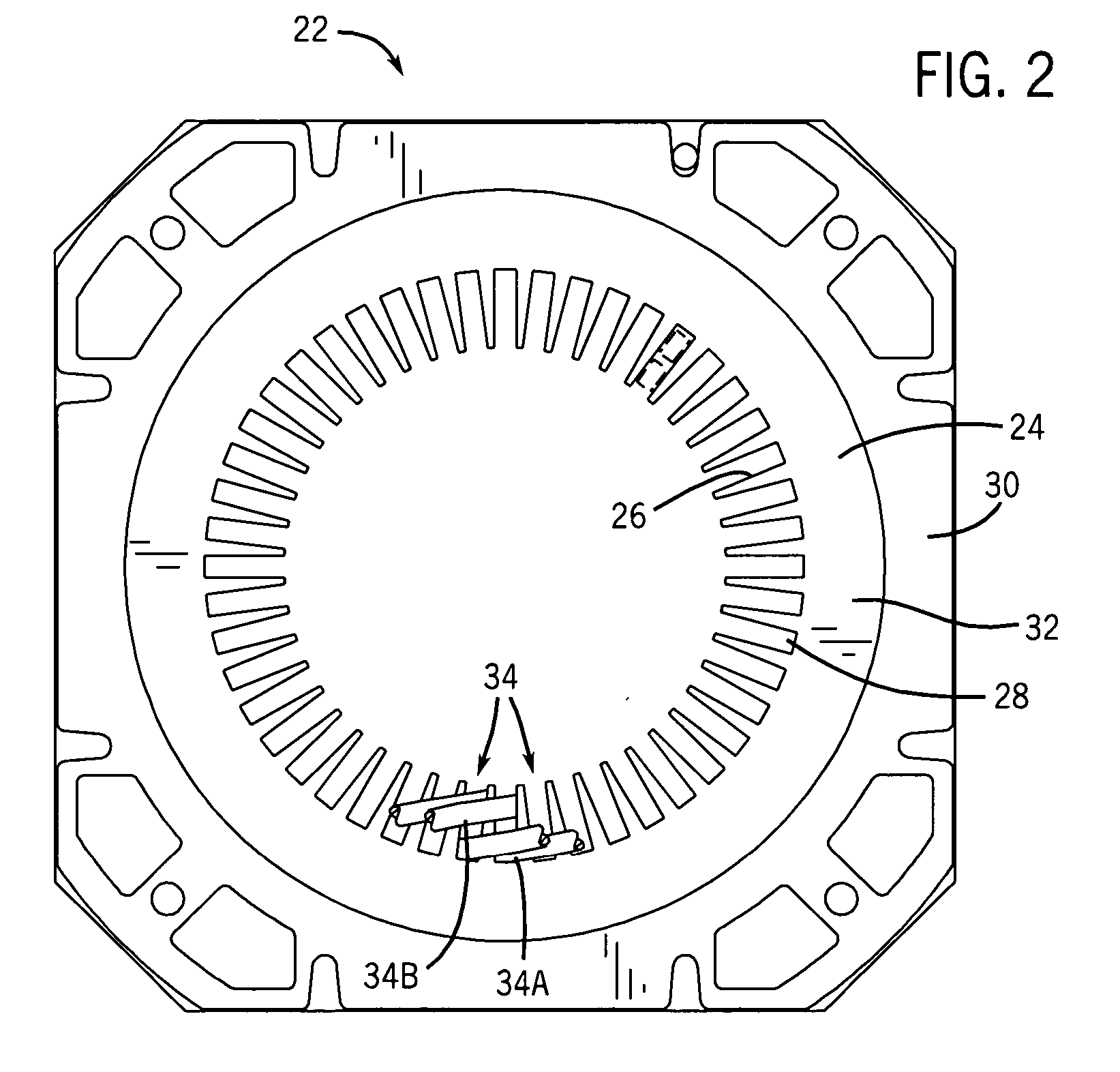Temperature detection method and apparatus for inverter-driven machines
- Summary
- Abstract
- Description
- Claims
- Application Information
AI Technical Summary
Benefits of technology
Problems solved by technology
Method used
Image
Examples
Embodiment Construction
[0022] Turning now to the drawings, and referring first to FIG. 1, an electric motor is shown and designated generally by the reference numeral 10. In the embodiment illustrated in FIG. 1, motor 10 is an induction motor housed in a conventional enclosure. Accordingly, motor 10 includes a frame 12 open at front and rear ends and capped by a front end cap 14 and a rear end cap 16. Frame 12, front end cap 14, and rear end cap 16 form a protective shell, or housing, for a stator and a rotor. Stator windings are electrically interconnected to form groups, and the groups are, in turn, interconnected in a manner generally known in the art. The windings are further coupled to terminal leads (not shown). The terminal leads are used to electrically connect the stator windings to an external power cable (not shown) coupled to a source of electrical power. Energizing the stator windings produces a magnetic field that induces rotation of the rotor and a rotary shaft 18. The electrical connection...
PUM
 Login to View More
Login to View More Abstract
Description
Claims
Application Information
 Login to View More
Login to View More - R&D Engineer
- R&D Manager
- IP Professional
- Industry Leading Data Capabilities
- Powerful AI technology
- Patent DNA Extraction
Browse by: Latest US Patents, China's latest patents, Technical Efficacy Thesaurus, Application Domain, Technology Topic, Popular Technical Reports.
© 2024 PatSnap. All rights reserved.Legal|Privacy policy|Modern Slavery Act Transparency Statement|Sitemap|About US| Contact US: help@patsnap.com










